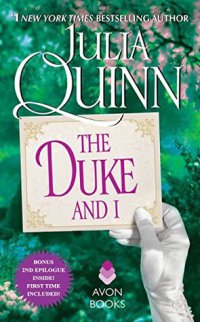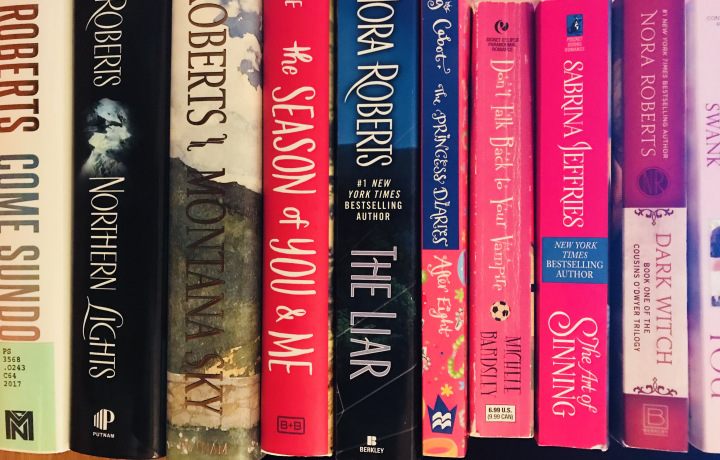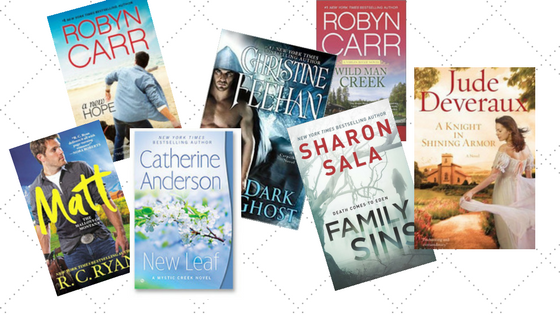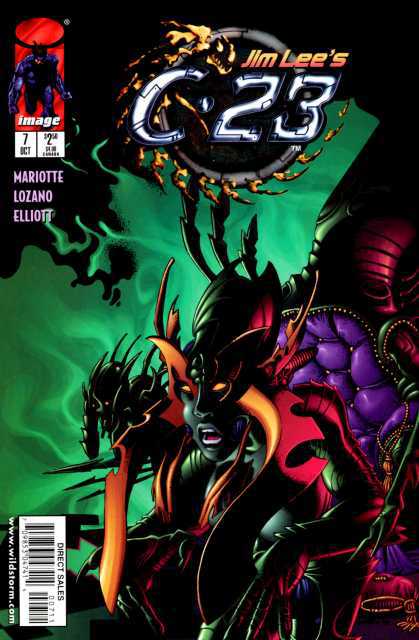Sweeping moorlands, craggy mountains, and kilts fluttering in the breeze. These images could not be farther from Jane Austen. In fact Austen rarely “engaged the senses” – that single most oft-repeated advice to the modern author, romance and otherwise. Yet, in some crucial ways, Austen helps us define the ingredients of the English-language love story. For instance, her novels are models of symmetry and resolution (the famous happy ever after, for instance) and she explores the psychology of romance in a way that left a recognizable path over which others would follow.
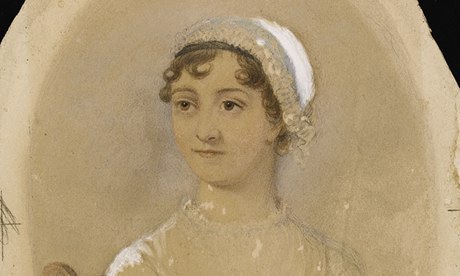
In this first in a two-part series, five modern romance authors — Jenna Da Sie, Kate Robbins, Robin St. Croix, Barbara Burke, and Carolyn Parsons — each tackle the question of how we understand Austen in terms of her influence on the modern genre of the romance novel.
Question 1: How might Jane Austen be a precursor to the romance novel as you write it?
Kate Robbins: It is a truth universally acknowledged that Jane Austen’s novels are some of the first romance novels of the modern age. However love stories have been around for as long as people have been sharing tales and embellishing the details.
The thing about her novels that makes them stand the test of time is that struggle between the hero and heroine with the promise of the Happily Ever After (HEA). Surely half way through Pride and Prejudice, few could see how Lizzy and Darcy would ever find common ground, yet Austen shows us time and again that no matter what the stakes, love will prevail in the end. The fact that the number one requirement of a romance novel today is the HEA, illustrates her impact on the genre.
Jenna Da Sie: I’ve always been taught to write what you know and all Jane Austen’s characters play out within the realm of the possible. She wrote about the behavior between parents and their children, the dangers and pleasures of falling in love, making friends and discriminating between those who mean us well and those who may not.
There is a clear relationship between Jane Austen’s works and modern day historical romances. Everything that I’ve written has had happy endings, love that overcomes hurdles and many other situations that happen in everyday life.
Jane Austen defined a structure. We all write for the happily ever after. Just as in Pride and Prejudice my novel starts with the main characters having an aversion to one another and in the end find out they are actually attracted to one another.
Barbara Burke: If it weren’t for Jane Austen there wouldn’t be regency romances — So asking this question is like asking a staunch Roman Catholic how God might be a precursor to the world! Georgette Heyer came along in the twentieth century like Jesus and started a whole religion (subgenre) around her worship. Though JA created the template she was actually a contemporary writer, not a regency writer.
Robin St. Croix: It’s important to recognize that in contemporary fiction there’s a distinction between romance novels and love stories. If you look at the Amazon category list, the term romance has taken on a very limited definition. The books tend have simple story lines (i.e. no sub-plot) and half-dressed men on the covers. The lovers are kept apart by nothing more than a bad first impression. Authors think they’re writing a heroine who is prejudiced like Elizabeth Bennet, and a hero who is proud like Mr. Darcy, but they’re not. In modern storytelling, if you want to a book with more oomph, you’ve almost certainly got to head over to the women’s fiction list.
Carolyn Parsons: One similarity is in the creation of rules of engagement. The era plays a role in the navigation of love in the Austen novels with rules determined by society. In modern times they’re often author-created, but they still exist. By creating and employing rules (usually self-imposed, e.g. a character has decided never to marry or the lovers live in separate cities and neither can move) the modern-day romance writer mimics Austen. Navigating these rules and occasionally breaking them creates the tension required to keep a reader engaged.
A second similarity is that she, like the modern-day romance author, brings them close, where they both see the possibility and then creates a situation that blows things all to hell, usually in the form of contrived misunderstandings between the characters. This is followed by despair and a feeling that all is lost. Eventually resolution is found and she brings them to their happy ending(s) in the same way a modern romance writer does.
Question 2: How is she an anti-romance writer? Little physical description of heroines or heroes, except in the vaguest terms, little sensory description of anything. The success or failure of romantic couplings on character strengths or flaws, not physical desire.
Barbara Burke: Bite your tongue. We fall in love with the mind, not the body. Having said that, there probably isn’t a lot of room in the modern romance world for a writer who emulates Austen too closely. People seem to want their love scenes very graphic and physical these days. I expect if she were alive today she wouldn’t be considered a romance writer – with her penchant for analyzing social mores and interactions as they play out against the background of the central romance she’d probably be classified as a woman’s fiction author, whatever the hell that means.
Carolyn Parsons: One notable difference is that she pays a lot of attention to several love stories at once. In a modern romance, there is one central romance. Any hint of another romance is taken off into another book altogether which creates many of the series so popular among romance readers today. Unlike modern romance writers Austen spends a great deal on all the potential couples in her books. Jane and Bingley get a great measure of attention in Pride and Prejudice as do Maryanne and Willoughby in Sense and Sensibility (and then eventually Colonel Brandon.) This leads to another exception…Maryanne’s great love is not the love she ends up with. Another huge difference is the ages of the characters. Austen’s characters are often teenagers. (Maryanne Dashwood is just sixteen). I consider the Austen novels to fit into the women’s fiction genre far more neatly than they do into the romance genre in many ways though mostly they stand alone and fit into modern literature as simply a literary novel.
Kate Robbins: She is [an anti-modern Romance writer] in the sense that she wrote in omniscient point of view (POV). Romance writers are highly criticized today if we are not deep into the character’s POV with no author intrusion whatsoever. This you will not see in a Jane Austen novel. She is always telling the story resulting in a disconnect between the reader and the characters.
Take the first line in Pride and Prejudice: “It is a truth universally acknowledged, that a single man in possession of a good fortune, must be in want of a wife.” Who is telling us this? Lizzy? Mrs. Bennett? No. Jane Austen is telling us this. Incidentally, this is my favourite first line of any book I’ve read.
Jenna La Sie: Jane Austen never wrote love scenes into her novels, the couples always just got together in the last few pages. I think that would be considered anti-romance in the way today’s romance novels are written.
In today’s romance the main characters would meet and dislike each other, but there would still be an attraction between the two of them, either the man or woman noticing. When Mr. Darcy meets Elizabeth he strongly dislikes her and says so: “…till catching her eye, he withdrew his own and coldly said, “She is tolerable; but not handsome enough to tempt me; and I am in no humour at present to give consequence to young ladies who are slighted by other men. . .”
More to follow. In Part II as we discuss the other 19th century influences on the romance novel and other ways that Austen herself may have impacted the genre. Thanks to our romance authors (links below) for these insights!
Kate Robbins is the author of the Highlands Chiefs series.
Barbara Burke is the author of the regency romance Recompromising Amanda and the WWII romance Not2Nite.
Jenna Da Sie is a California-based romance writer completing her regency romance novel.
Carolyn Parsons is a Canadian author whose latest novel is Charley through Canada.
Robin St Coix is the author of Masquerade, a novel in twelve parts.
Writing Contest: “New Hook” Update
Are you preparing for the 2017/18 Instant Hook? Good! There are some changes though in keeping with the theme of the history of fiction.
The main one is this: your extract no longer has to be from the very beginning of your novel, but the work must be some kind of ‘riff’ on classic or previously published work (in the public domain). Could be anything from a Helen Fielding-like romp on 19th century literature to a work which uses a Shakespeare play as its template. Your entry could even be a riff on a poem if you like, though, of course, the entry itself must be prose. For the sake of clarity, please state on the entry itself the title of the classic work as well as the title of your entry. Here, below, are the rules:
- The awards are open to anyone who is over 18 at time of entry.
- The submission must be sole-authored, in English, and no more than 250 words.
- It must reference, though character, situation or plot, a literary work in the public domain.
- The extract may have been written for the competition or may be part of a manuscript already completed. But it cannot have been published, and cannot have been accepted by a publisher at time of entry.
- These awards are open to new or established, already-published, authors (it does not have to be a first novel).
- This is a blind-judged competition. HB Creativity must not have seen any part of this novel prior to entry; it must not be a work for which I personally have provided tutoring or editing services. I cannot absolutely guarantee I will not recognize a writing style, but I must not recognize the writing, the characters, or the plot.
- Please use 12 Times New Roman font and double space your entry.
- Send your entry by mail only (no emails please) to Paul Butler, HB Creativity, 8 – 121 Silkstone Road West, Lethbridge, Alberta, Canada, T1J 3Y6 (make sure you have “Paul Butler, HB Creativity” as well as the address) with a postmark date no later than December 31, 2017. Winners will be announced in March 2018.
- Please do not put your name on your entry! Enclose in a separate envelope your name and contact (email and phone), plus the title of your entry. This envelope will be opened after the winners have been decided. Along with your name and contact please indicate whether you wish to receive our bimonthly INK STAINS news bulletin.
- There will be a one-time email to entrants to announce the competition winner. There will be no advertising of any kind on this email. If you do not wish to receive this email, please indicate this on your entry.
- Do not send your only copy. Copies without sae cannot be returned. If you do not want your entry returned, it will be shredded and recycled.
- There is no cost to enter.
- There is no residency or nationality requirement.
- Copyright remains with the author. We may ask for permission to publish an extract of the winning work on this website but this will not be done without the author’s express permission. Withholding permission will in no way invalidate the entry or disqualify it from winning a prize. By entering you merely give permission for me to use your name and the (provisional) title of the work.
- One winner will receive a cash prize of $250.00 (Canadian).
